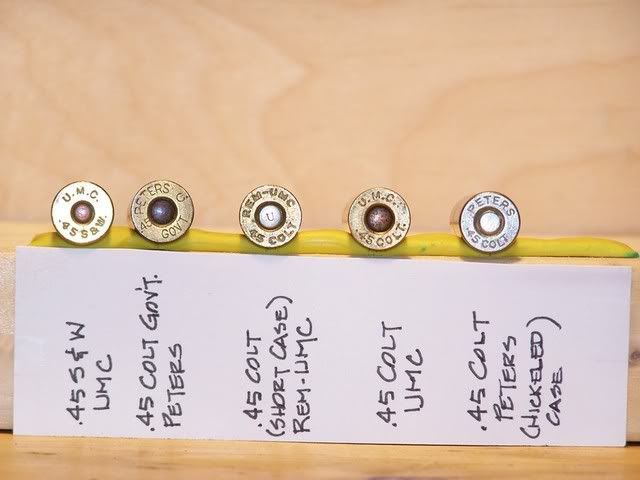Terry,
You're correct.
History of the 45 Long Colt term:
Shortly after the Army procured S&W Schofield revolvers, the 1st time a supply depot accidentally shipped 45 Colt ammo to a unit issued the 45 S&W Schofield revolvers (needing the shorter S&W round), the Army figured out it had a multiple ammunition problem! Coincidentally troops were complaining about the recoil of the original Colt ~40gr load of black powder and resulting poor marksmanship.
Soon the original ~40gr load was reduced to 28 grs. Then government arsenals established the 45 S&W round as standard c. 1887 since it would chamber in both the 45 Colt SAA and S&W revolvers.
Since the 45 Colt cartridge inventory was not depleted for some time, those troopers who appreciated the superior performance of the 45 Colt round and were issued the 45 Colt SAA, specifically requested the longer round, the “long Colt” round with small L.
Other 45s of the time:
Another confused cartridge was the short .45 Frankford loaded only for the 1906 Military trials for a requested new military .45 DA Revolver. S&W designed the cartridge as the .45 S&W Special and chambered prototype Triple Locks for it that were tested in the trails.
The result of those trials was the Army's short-lived ".45 Caliber Ball Cartridge, Model of 1909," full length .45 round with the enlarged rim diameter to .536" - .540" was made for the Colt New Service Model 1909 revolver, briefly adopted by the Army until the 1911 was accepted. It was loaded only at Frankford Arsenal and specifically designed with a larger rim similar to the Schofield for more reliable extraction the Colt Model 1909 DA revolver. This cartridge will not chamber in 45 single actions unless loaded every other chamber. However, the .45 Colt and .45 Schofield cartridges will also work OK in the M1909 revolver.
This was the army's stop gap measure following the .38 Colt fiasco in the Philippines (1899-1902 where the Moros, Muslim converted tribesman, would prepare for battle by smoking pain-killing drugs and tying off their extremities with vines or wire at regular intervals to serve as ready-made tourniquets) and until the 45 ACP hit the streets.



